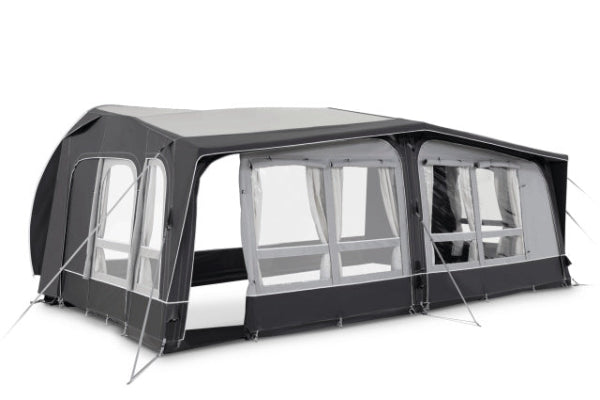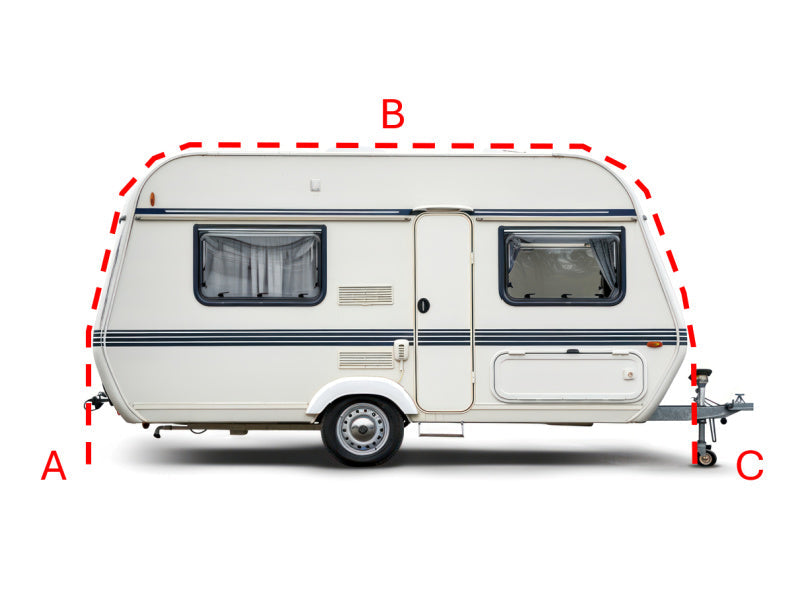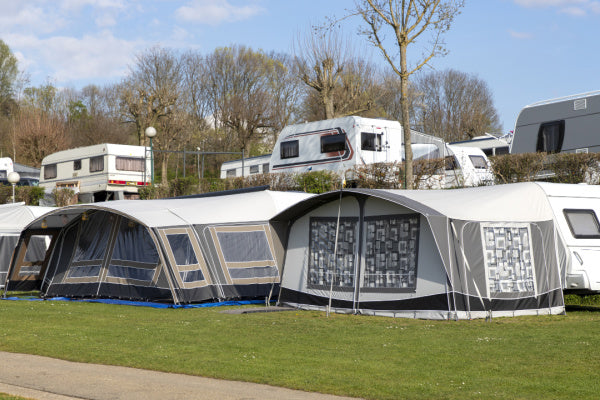How to Secure a Caravan Awning in High Winds
Ever watched your caravan awning doing its best impression of a sail in high winds? The quick fix: secure it with storm straps, ground anchors and support poles. Caravan awnings need proper anchoring to avoid the dreaded 'Mary Poppins moment'. Read on for expert tips to keep your outdoor space grounded.
Securing Your Awning in Windy Conditions
Mother Nature loves to test the limits of camping equipment. Strong winds pose a particular challenge for awnings, which can transform from peaceful shelters into wayward kites in moments. Proper securing techniques make the difference between a relaxing holiday and a costly disaster.

The key lies in preparation and understanding. Most awning damage happens because of inadequate setup rather than extreme weather. Getting it right from the start saves both time and money.
Think of an awning as part of a system. Each component plays its role in keeping everything secure. Skip one element, and the whole structure becomes vulnerable.
Wind-Resistant Setup Techniques
Setting up an awning demands more than just following basic instructions. Weather conditions change rapidly, especially at coastal camping spots. A proper wind-resistant setup starts with understanding the local environment.
Look around the pitch site. Notice the wind patterns. Check where natural shelter exists. These observations shape the entire setup process.
Using Extra Pegs and Guy Lines
Storm pegs matter more than many realise. Standard pegs might hold in calm conditions, but they're rarely enough when the wind picks up.
Here's what works:
-
Rock-solid storm pegs that dig deep into the ground
-
Extra-long pegs for loose or sandy soil
-
Double pegging at crucial anchor points
-
Diagonal guy lines for enhanced stability
The ground matters too. Wet soil today means loose pegs tomorrow. Check and adjust regularly.
Tightening Guylines Properly
Proper tension makes or breaks an awning setup. Too loose, and the wind catches hold. Too tight, and something might snap.
Essential tension tips:
-
Start with corner guy lines
-
Work systematically around the awning
-
Listen for the right 'twang' - not too tight, not too slack
-
Adjust after temperature changes
Remember: guy lines work as a team. Adjusting one affects its neighbours.
Using Windbreaks
Smart windbreak placement transforms a vulnerable setup into a fortress. Natural barriers offer the best protection - trees and hedges break up wind patterns effectively.
Portable windbreaks need careful positioning:
-
Set them at 45-degree angles
-
Create a gradual wind deflection
-
Secure them properly - they're useless if they blow away
-
Layer the protection for stronger winds
Leave gaps for air to flow through. Solid barriers can create dangerous turbulence.

Reducing Awning Area
Sometimes less proves more. Reducing the awning's surface area gives the wind less to push against.
Smart reduction strategies:
-
Roll in sides during gusts
-
Remove unnecessary panels
-
Adjust the pitch angle
-
Use smaller extensions in challenging conditions
Think about wind direction. Sometimes a slight angle adjustment makes a massive difference.
When to Retract the Awning
Knowing when to admit defeat saves money and hassle. Watch those weather forecasts closely.
Clear warning signs for retraction:
-
Wind speeds approaching 30mph
-
Changing weather patterns
-
Overnight storms predicted
-
Extended periods away from camp
Better safe than sorry applies perfectly here. No awning benefit outweighs major repair costs.
Warning Signs of High Wind Stress
Reading the signs prevents disasters. Pay attention to what the awning tries to tell you.
Watch out for:
-
Rhythmic flapping sounds growing louder
-
Visible pole flexing
-
Guy lines losing tension repeatedly
-
Material stretching in new ways
-
Unusual creaking or groaning
Each warning sign demands immediate action. Small problems grow quickly in strong winds.
The material itself offers clues. Watch for new creases or stress points developing. These show where the wind loads concentrate.
Poles and brackets need regular inspection. Look for subtle changes in shape or position. Check connection points carefully.
Prevention beats cure every time with awning care. Regular checks catch problems early. Small adjustments prevent major failures.
Keep tools handy. When the wind rises, quick access to securing equipment makes all the difference. Store spare pegs, guy lines, and tools where they're easy to grab.

Remember the basics:
-
Check everything twice
-
Trust your instincts
-
Act before problems grow
-
Keep spares ready
-
Monitor conditions constantly
Success with awnings comes down to attention to detail. Every peg matters. Every guy line plays its part. Every check potentially prevents damage.
Weather patterns change fast in Britain. What works perfectly one hour might need adjustment the next. Stay flexible in your approach.
Learn from each setup. Different sites present different challenges. Build your experience gradually. Start with calmer conditions before tackling more exposed spots.
The reward for proper setup? Peace of mind. Knowing your awning stays secure whatever the weather brings. Enjoying outdoor living without constant worry.
Happy camping starts with solid foundations. A well-secured awning provides exactly that - a stable base for holiday enjoyment. Master these techniques, and let the adventures begin.
Other content you might like:
- Caravan awning not rolling up straight
- Caravan awning not retracting
- Caravan awning not locking
- Caravan awning on hardstanding
- Caravan awning in high winds
- How do you tie down a caravan awning?
- When should I take my caravan awning down?
- How to stop caravan awning flapping?
- Why do some campsites say no awnings?





Leave a comment